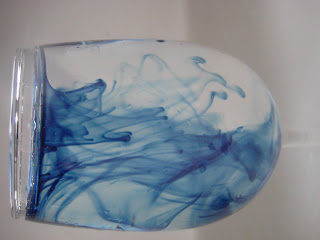For my A Level Art exam this year my original idea was focusing on water. I was interested in looking at water and reflections of light in liquid and metal. I also wanted to try and photograph the movement of water, for example when it splashes up and catches the light. These are my first set of photographs, I found it hard to capture moments of movement without blurring. However when I slowed down the shutter speed it was easier to photograph the water with a better result. These are just a few of my photographs but I like the viscous quality that the water has, especially in the middle 4 photos.
| Turner |
As I chose a very fluid subject matter I decided to experiment with materials that could offer the same sort of easy movement. I started by working from my photos using charcoal, I found this easily blendable and quite effective in creating soft tones and changes in light. The downfall is that it is impossible to introduce colour into a charcoal drawing so I wanted to find a better method of portraying my photographs. In the second drawing I was focusing on movement from a small section of one of my photos, this drawing had similarities to some of Turner's paintings in the way it shows a section of abstract movement. However I wanted to pursue a more high realism style of painting.
Moving on from charcoal I started to use oil pastels, I like the level of blending I achieved and the ability to introduce blues and yellows rather than just monotone. To improve this picture I should have used turps as this changes oil pastel into a thicker paint like consistency and would definitely improve the blending of colours.
| Ricard Estes |
| Jason De Graaf |
I researched high realism art history and found two artists that I was most interested in: Jason DeGraaf and Richard Estes. Both use light and reflections in their paintings. DeGraaf's work manages to capture moments of movement in water, which was exactly what I was aiming for with my own work. Estes' paintings are almost like visual phenomenon, they mix light with metal and reflections, another aspect I was interested in looking into.
| Rodin |
I wanted to expand on my first set of photos as I felt I had gone as far as I could, so I experimented with the idea of visual phenomenon. Instead of focusing on moving water this time I decided to try capture the movement of food dye in water. I found when I photographed this upclose that it produced great abstract shapes but still had the fluidity I wanted.
I experimented with different ways to best portray my subject matter. When I was working on a smaller scale I realised I needed to use materials that could offer precision as the dye in my photos is very defined. I tried using biro however it didn't offer the ability to blend that I would have liked so I moved onto oil pastel pencils which I liked as they meant I could get both of these aspects. I also did a close up section in acrylic paint, this lead me to the conclusion that my final piece would need to be on a large scale to look effective as I found it almost impossible to paint the detailed dye and water so small.
This is my final exam piece. Overall I am pleased with the outcome however I encountered several problems along the way. The main aspect I struggled with was the time constraints of the exam, because I used acrylic paint it meant I had to build up layers of colour before I could get started with the deatil, and as I chose to do it in a high realism style this also took a long time. If I had had more time I would have concentrated more on the detail of the full painting rather than just the blue dye. I a regret not using oil paints as I feel these would have offered more depth of colours than acrylic. Though I am happy with the finished painting and I think I managed to fulfil my orginal criteria if capturing water and movement.





























